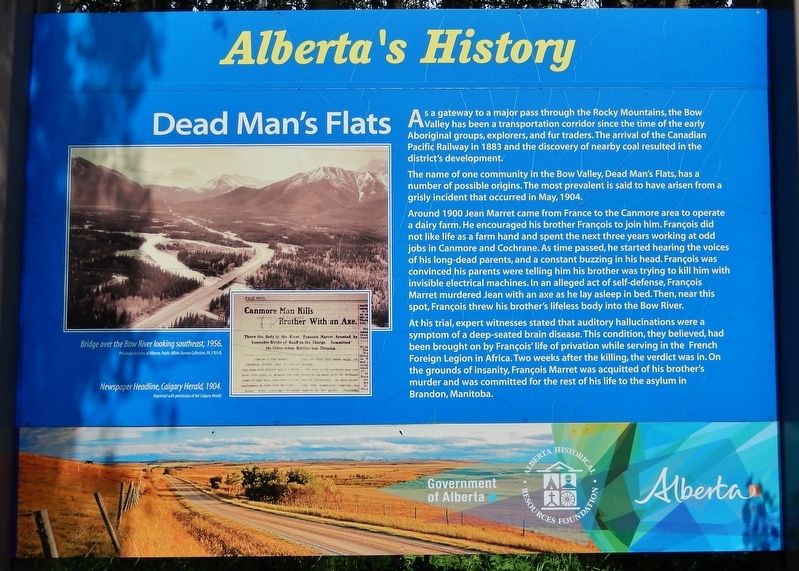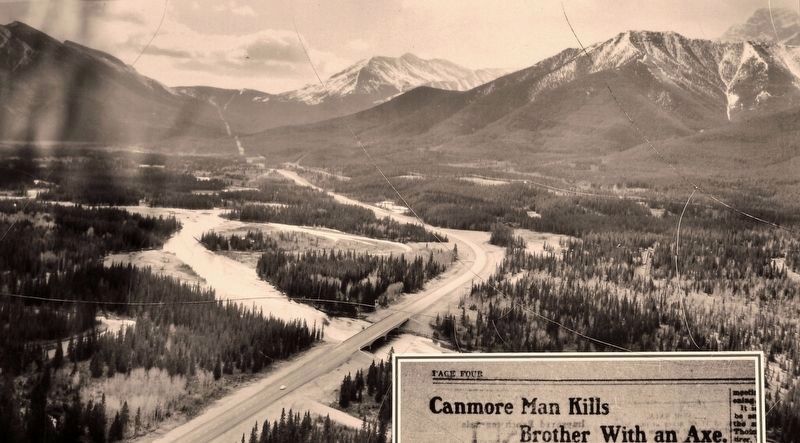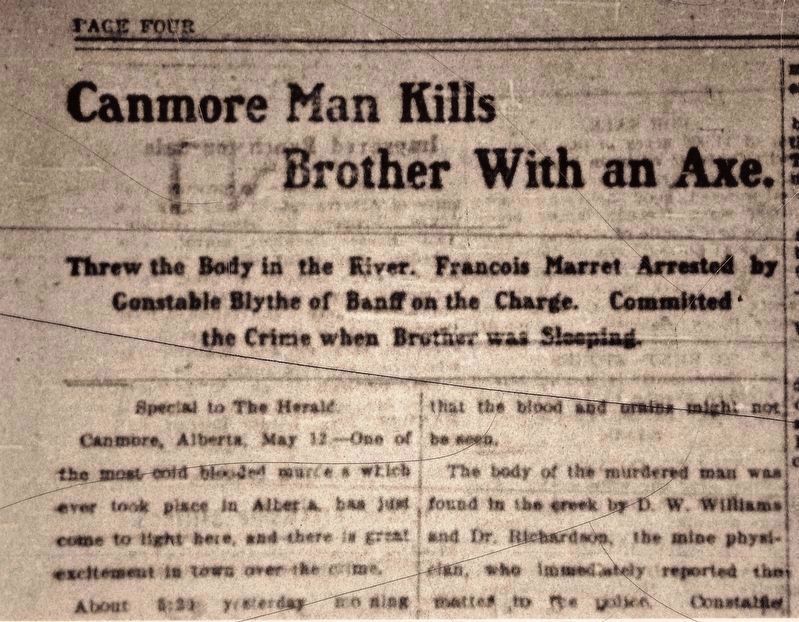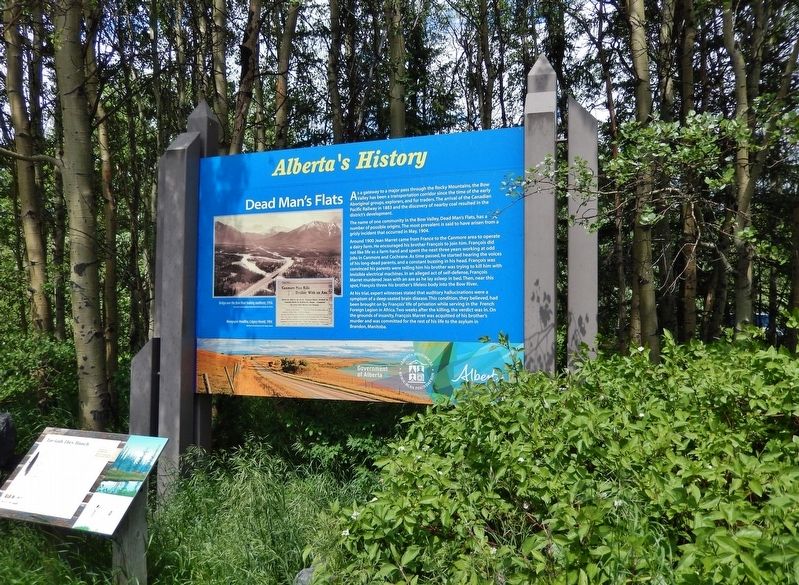Dead Man's Flats in Municipal District of Bighorn No. 8, Alberta — Canada’s Prairie Region (North America)
Dead Man's Flats
Alberta's History
As a gateway to a major pass through the Rocky Mountains, the Bow Valley has been a transportation corridor since the time of the early Aboriginal groups, explorers, and fur traders. The arrival of the Canadian Pacific Railway in 1883 and the discovery of nearby coal resulted in the district’s development.
The name of one community in the Bow Valley, Dead Man's Flats, has a number of possible origins. The most prevalent is said to have arisen from a grisly incident that occurred in May, 1904.
Around 1900 Jean Marret came from France to the Canmore area to operate a dairy farm. He encouraged his brother François to join him. François did not like life as a farm hand and spent the next three years working at odd jobs in Canmore and Cochrane. As time passed, he started hearing the voices of his long-dead parents, and a constant buzzing in his head. François was convinced his parents were telling him his brother was trying to kill him with invisible electrical machines. In an alleged act of self-defense, François Marret murdered Jean with an axe as he lay asleep in bed. Then, near this spot, François threw his brother's lifeless body into the Bow River.
At his trial, expert witnesses stated that auditory hallucinations were a symptom of a deep-seated brain disease. This condition, they believed, had been brought on by François’ life of privation while serving in the French Foreign Legion in Africa. Two weeks after the killing, the verdict was in. On the grounds of insanity, François Marret was acquitted of his brother's murder and was committed for the rest of his life to the asylum in Brandon, Manitoba.
Erected by Alberta Historical Resources Foundation.
Topics. This historical marker is listed in these topic lists: Industry & Commerce • Law Enforcement • Railroads & Streetcars • Settlements & Settlers. A significant historical month for this entry is May 1904.
Location. 51° 2.357′ N, 115° 16.025′ W. Marker is in Dead Man's Flats, Alberta, in Municipal District of Bighorn No. 8. Marker is at the intersection of 1 Avenue and 1st Street, on the right when traveling west on 1 Avenue. Marker is located in a wayside on the north side of the Trans-Canada Highway, 5.5km east of Three Sisters Parkway (Alberta Hwy 742). Touch for map. Marker is in this post office area: Dead Man's Flats AB T1W 2W4, Canada. Touch for directions.
Other nearby markers. At least 2 other markers are within 10 kilometers of this marker, measured as the crow flies. Tae Gŭh They Hunch (here, next to this marker); Coal Train Comin' (approx. 9.2 kilometers away).
Related markers. Click here for a list of markers that are related to this marker. Dead Man's Flats
Also see . . .
Dead Man's Flats.
Another account states that two or three First Nations people who were illegally trapping beaver noticed a warden approaching in the distance. Knowing that they did not have time to flee without being spotted, they smeared themselves with beaver blood and pretended to be dead. The warden, fooled by their deception, ran for help. Meanwhile, the trappers took their beaver pelts and escaped. This account is regarded as dubious; for example, no known description of this incident appears in the official wardens' reports.(Submitted on August 10, 2022, by Cosmos Mariner of Cape Canaveral, Florida.)From 1974 to 1985 the hamlet was officially called Pigeon Mountain Service Centre, but it changed its name to Dead Man's Flats in 1985 to encourage tourism. The new name had been unofficially used to designate the hamlet for several decades prior. Before the Trans-Canada highway was constructed through the area in the 1950s, it was sparsely populated Crown land; among the only structures in the area were a corral and a camper's cabin. Proximity to the new national highway spurred the hamlet's development as a commercial service centre and rest stop for travelers and truck drivers.
Credits. This page was last revised on August 10, 2022. It was originally submitted on August 9, 2022, by Cosmos Mariner of Cape Canaveral, Florida. This page has been viewed 288 times since then and 58 times this year. Photos: 1, 2, 3, 4. submitted on August 10, 2022, by Cosmos Mariner of Cape Canaveral, Florida.



